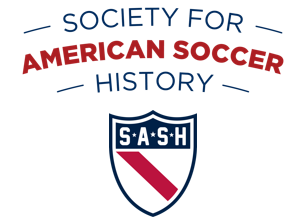The United States played two World Cup qualifying games against Mexico in Mexico City in January 1954. A few weeks before the games, the U.S. Soccer Football Association submitted to the Mexican federation the United States roster for the trip. The Mexican federation rejected it, saying that three players on it weren’t American citizens. The USSFA reluctantly replaced the three, and the games went ahead.
Looking at these events from a distance of more than 50 years, they don’t seem very surprising, given the frequency with which the United States national team has been involved in eligibility controversies over the years. Here are some of the others:
—Certainly the most famous is the 1950 World Cup, at which the United States team included three players, Joe Gaetjens, Joe Maca and Ed McIlvenny, who were not American citizens. All of them had officially registered their intention of becoming citizens, the equivalent of getting a green card today. That was good enough under the FIFA rules of 1950, although it would not be good enough under today’s rules. After a protest, FIFA ruled later that year that the three were legit. Of the three, only Maca eventually did become an American citizen.
—There have been numerous written references over the years to six British ex-professional players on the United States team at the 1930 World Cup, but those references are incorrect. Of the players being referred to, all six had been born in Britain, but four of them had moved to the United States as children. Only one of the six had ever played a professional minute in Britain (two third-division games eight years earlier).
—1973 was a particularly difficult year for the U.S. national team to stay on the straight and narrow concerning the use of non-citizens. Only one opponent protested about the U.S. team fielding questionably eligible players, Canada at a friendly in Windsor, Ontario, but it appears that this was far from the only case of the U.S. team getting away with something that year. I see more than a half-dozen players in U.S. lineups that year whose citizenship I’m not sure of.
—Canada also protested about an ineligible player in 1997, but this one was a case of mistaken identity. After a World Cup qualifier in Palo Alto, Calif., Canada protested the game on the grounds that one of the American players, David Wagner, who had one American parent and one German parent, had previously played for a German age-group national team. Investigation revealed that there was a David Wagner who had played for Germany, but that it was a different person.
—In the 1990s, there were occasional references to American stars Thomas Dooley and Earnie Stewart as “passport Americans,” an allusion to the fact that these two European-born and European-raised players had obtained United States passports before playing for the United States (just like every U.S. player was required to). The name ignored the fact that Dooley and Stewart, who each had American fathers and thus had been American citizens from the moment they were born, couldn’t have gotten those passports if they hadn’t already been American citizens.
—The U.S. national team has fielded dozens of naturalized citizens over the years, but only once has the USSF used a technicality in the citizenship process to get expedited American citizenship for a player it wanted for the U.S. national team. That was David Regis, a Frenchman who gained American citizenship in 1998 via the fact that his wife was an American citizen, using a facet of U.S. immigration law that expedites citizenship applications for the spouses of overseas Americans employed by U.S. companies that promote foreign trade.
The United States hasn’t always been the accused party in eligibility disputes. At the 1934 World Cup, Italy was allowed to use three Argentine players of Italian descent who had played for Argentina in earlier years. One of them, Luis Monti, played for Argentina against the United States in the 1930 World Cup and for Italy against the United States in the 1934 World Cup. Another, Raimondo Orsi, played for Argentina against the United States in the 1928 Olympics and for Italy against the United States in the 1934 World Cup.
A version of this article first appeared on Roger’s Big Soccer blog on July 23, 2012
